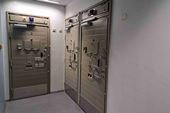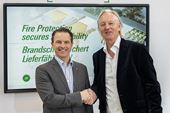Smart city is now a well-established term, and examples demonstrate how collecting and combining data about all aspects of an urban environment – from the flow of traffic to weather, from air quality to noise pollution – can enable proactive management to improve liveability. Given that cities are partially defined by the fact that they’re made up of many residential and commercial properties, the concept of the ‘smart building’ is fundamental to a smart city achieving its overall objectives.
Smart buildings both form and become part of a mini-ecosystem, interacting with the people, systems and external elements surrounding them. They combine technology with data and the ability for existing building systems to communicate with one another. This results in a smoother, synchronised environment that operates more safely and efficiently.
Many connected technologies are combined in a true smart building. With advances in quality, processing power and analytics, surveillance cameras can play a central role in collecting data which supports a number of aspects of a smart building’s operation.
Security, comfort and efficiency combined
The frontline of security in any building is the front door and reception area, while also being the place where a pleasant, safe and welcoming atmosphere needs to be created. Sometimes these needs can appear to be in conflict with each other. While surveillance cameras have traditionally been seen as central to security, they can now support broader ‘front of house’ requirements.
Network cameras equipped with the relevant analytics software can be used to manage occupancy in reception areas – particularly useful in locations where social distancing needs to be enforced – and trigger alerts when visitors arrive or more staff are needed during busy periods. When combined with modern access control solutions linked to network surveillance, the entry of registered and authorized staff can be made more efficient through biometrics or the use of QR codes.
Data from surveillance cameras in areas of high footfall can also be analysed over time and used to optimise the design of lobbies, reception areas, waiting areas for elevators, etc, improving the flow of visitors through the building. This same data, which highlights how, when and where people are using the building, can also be used to support one of the main goals of a smart building: reduced energy consumption.
Support sustainability goals – both within the building and the city itself
Sustainability is becoming a priority in every facet of society, and urban environments the world over are recognising their role in creating a sustainable future. With buildings consuming a significant proportion of global energy – and therefore directly contributing to a city’s overall environmental impact – there is a great drive to improve this through the use of connected technologies.
Lighting and heating, ventilation and air-conditioning (HVAC) are the biggest consumers of energy in most buildings, and any steps that can reduce this will aggregate up to significant gains. Video analytics can detect when an area in a building is empty or less frequently populated, and smart lighting triggered to turn off or dim lights until a person enters the space.
Similarly, heating or air conditioning can be automatically adjusted to suit occupancy levels, improving both comfort and energy efficiency. In many cases, such analytics can be applied to video from existing network surveillance camera – no new investment in cameras needed.
Buildings made for today and the future
As more sectors adopt smart buildings to improve efficiencies, streamline processes, and reduce energy consumption, it’s easy to see how these will contribute to the wider productivity and sustainability goals for smart cities.
Connected buildings play an important part by not only controlling the impact of the activity within their own walls, but feeding into the efforts of all buildings and structures within the wider city ecosystem. In this way, city authorities can have a bird’s eye view of operations on a macroscale and understand the role each structure plays in supporting their sustainability objectives.
















